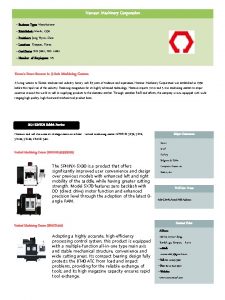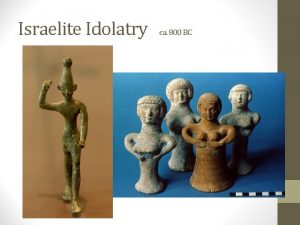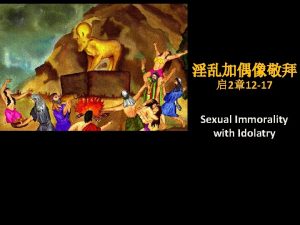note the idolatry of the machinery and of
























- Slides: 24

note the idolatry of the machinery and of the physique of the worker; this is the age of production, the engineer, the political conscious worker.

note the big investment in equipment and imagine how costly it would be to change the line--which could require shutting it down and retooling it.

huge assembly lines, concentrations of thousands of workers for war-time production.

Since the market for cars is limited, the middle class being small and workers making too little wages, small-cylinder cars don't go on the market until the 1950 s.

Workers massing to go into work on time in the 1960 s Workers with so much in common in work more readily unionized to gain higher wages and political voice

Big strike against the Fiat Mirafiori works during the "red years" 1969. By the late 1960 s, workers were organized in strong unions, with Communist party backing, as you can see from the slogans and flags.

The Fiat Company opens to the USSR by setting up a plant at Togliattigrad in 1970

Fiat sets up plants elsewhere too, here in Brazil, to take advantage of emerging markets and low costs locally.

As the labor movement at Fiat weakens, the Communist party, hear represented by its leader, Enrico Berlinguer, tries to give it support in the occasion of negotiations over contracts.

The head of the General Confederation of Labor, Lama, also speaks to the workers during the 35 day strike of 1980, which the workers lose. This strike marks the end the strong labor movement at Fiat.

1986: Robots making cars instead of men

Note how much has been robotized and mechanized, and the change in the workers' garb, as if they were clerks instead of line workers.

note how scientific production has become, how skilled the workforce, the distance from the heroic line worker of the 1920 s.

Originally Benetton produced in and around Treviso, the northeastern Italian town where the family firm was founded. As its market grew, and the firm employed more and more specialized communications technologies, it was able to outsource production to small workshops in Italy and more peripheral areas. The factory disappeared--and so did the workers.

Post-Fordist products put a big emphasis on life style. Notice how the image, produced by the company, emphasizes the chic life-style of management, to which the very chic-looking factory is a mere backdrop. There is no sweat anywhere. And no labor. And no locality. Just image.

Company publicity highlights the communication functions of the industry. Headquarters holds the information-communication-design functions of the business. Labor occurs elsewhere. Communication enables the company to have precise figures directly from the stores and, in turn, to communicate directly to manufacturing sites. The stock passes directly from the sites to the stores. That way, style changes can occur rapidly and there is no need to hold costly inventory.

Benetton emphasizes Italian design and manufacturing traditions. This emphasis is important to giving meaning to products that are always changing, infinitely adaptive to a global public, and lacking the concreteness that consumer durables like automobiles seemed to have.

Between management and distribution, the phase of production seems to have disappeared. The biggest investment of post-fordist capitalism is in distribution systems. These use relatively small work forces. And the images would make it seem that they virtually operate themselves.

Corriere della Sera, October 18 1998 Child labour for Benetton in Turkey Eight o' clock in the morning in the Kagithane neighbourhood, outskirts of Istanbul, on the European side of the Bosporus. De streets are filled with mud and holes. The sky is a roof of smog. We see the workers of the factories of Sanayi Mahallesi, an industry zone with textile companies. The eyes of Ozcan Babat, 12 years old, are sleepy but his three older brothers drag him with them to the entrance of the factory Bermuda: an ugly building with three stores, occupying between 250 and 350 people, according to the season. Ozcan should be going to school; according to the Turkish law and also to the international labour convention on the work of minors (which forbids the work of children younger than 14). And according to his face. Instead, Ozcan enters the factory each morning at 8. "Since a year I come to work here with my brothers. I work illegal, my brothers are hired legally. They pay me 22 million Turkish lire. There is no social security whatsoever, no social benefits. They pay me cash, once a week, a quarter of the total. I am happy. I don't complain. What I do? I saw long trousers. Which brand? Benetton naturally. We all make garments for Benetton. . These days Bermuda is working on the orders of Benetton for the spring of '99. Or better, there is a flow of orders from Bogazici Hazir Giyim, the company that manages the orders for Benetton in Turkey, garment with the brand name Benetton, made with cloth that is send in directly from Italy. These concepts are miles away from the daily reality of a child like Mehmet Kocac. For 132. 000 (Italian) lire a month, Mehmet is a piece in the long chain, from subcontractor to subcontractor, that produces garment that is sold at a much higher price than their wage. In store 012 of Benetton, specialised in clothes for children, in he centre of the same Istanbul where Mehmet works, the cost of a sweater for the winter is 38 million Turkish lire. To buy this, Mehmet and the other 25 to 30 children younger than 14 working at Bermuda, have to work one and a half month. Like Mehmet and Ozcan, Ercan Yildirim is a child worker from Turkish Kurdistan. He is 13 years old and during a work break, after lunch, he starts playing in one of the buildings of Bermuda. If a stranger approaches him and asks him if he works for Bermuda, a gatekeeper comes out of the building who threatens: "leave these premises, we have orders not to let anybody near. " This Benetton production-chain consists of the mother company in Italy and Bogazici that places the orders in Turkey at Bermuda and several other large factories. In addition to this Bogazici has 24 to 30 small workshops producing for it. At the company Gorkem Spor Giyim, the owner Yusuf Eskenzai shows a Benetton-hat that one of his employees just finished. And a sweater for children. Eskenzai explains to the journalist who acts as a garment industrialist: "We produce for Benetton. Five thousand, ten thousand, how many they want, what they want. We cut fabrics by hand sew the clothes here or at other workshops working for me. " A part of the garments go to Italy. A part stays in Turkey or goes to the Turkish speaking parts of the ex-Soviet Union. On all labels it says: "Made in Italy".

Once more, publicity shots emphasize the ready-to-wear, just-in-time nature of post-fordist production. There is no assembly line here. The garments are, as if, ready-made, the colors, the styles, the cut, at the command of the consumer.

Benetton stocks what management, drawing on local store reports, thinks the traffic will bear. Benetton in this chic place caters to the tourist trade in downtown Paris. It's stock would be subtly different--in color, cut of jeans, etc--from the Benetton on Madison Avenue or the Benetton which opened, say, in the former German Democratic Republic town of Eisenach in 1992.

United Colors of Benetton moved right into eastern Europe after the Wall fell. It outsourced production to places like Albania and it set up shops, practically indistinguishable from those in western European centers, on the main streets of the capital cities, then in smaller and smaller centers. Post-fordist consumption segments production, seeming to tailor it to local tastes. At the same time, it uses networks to offer the same product across national and international lines, catering to a wide middle class--in the case of Benetton. Who knows where the products for this store were manufactured in Slovakia, or in Albania, or in Istanbul?

Benetton publicity is definitely iconoclastic. It embraces globalization. Posters by Oliviero Toscani want to make a statement to the effect that United Colors of Benetton are for the whole world, that they unify, across race, in spite of disease, notwithstanding religion. Publicity is socially conscious, as if the product itself were socially conscious, pro-environment, a contribution to the unity of humankind. Benetton, in sum, unites the world in life style, while recognizing difference. The problem of unequal standards of living seems to dissolve.

SMILE, TOSCANI’S HERE!
 Disobedience is as the sin of witchcraft
Disobedience is as the sin of witchcraft Exodus idolatry
Exodus idolatry Leo iii outlawed crucifixes as idolatry
Leo iii outlawed crucifixes as idolatry Difference between note making and note taking
Difference between note making and note taking Signal word
Signal word Difference between note making and note taking
Difference between note making and note taking Debit note format
Debit note format What is credit note and debit note
What is credit note and debit note Linear method of note taking
Linear method of note taking Financial documents in order
Financial documents in order Simple discount notes
Simple discount notes Plant and machinery valuation case study
Plant and machinery valuation case study Plant and machinery valuation
Plant and machinery valuation Types of plant and machinery
Types of plant and machinery Alan turing computing machinery and intelligence
Alan turing computing machinery and intelligence Smb machinery
Smb machinery District grievance committee
District grievance committee Namsun machinery
Namsun machinery Divine machinery
Divine machinery Types of machinery
Types of machinery Administrative machinery
Administrative machinery Grievance machinery deped
Grievance machinery deped Pmmai
Pmmai Indian pharma association
Indian pharma association Lombardi machinery
Lombardi machinery














































